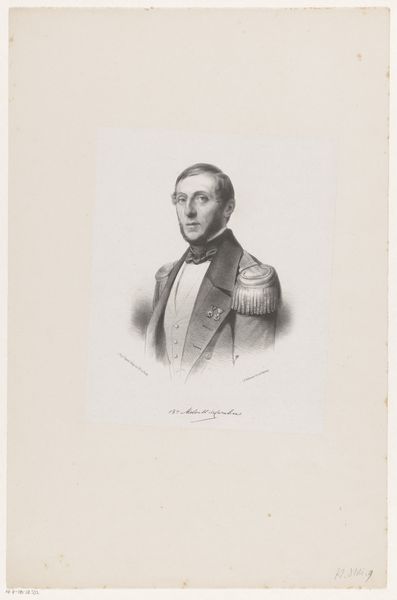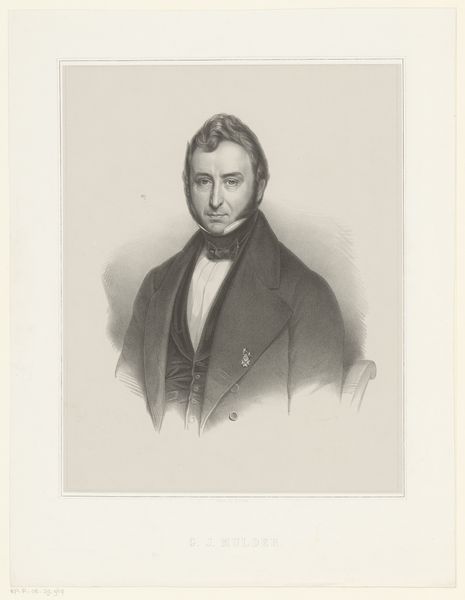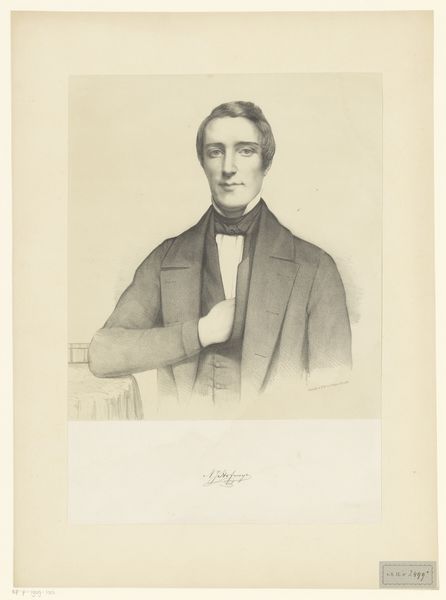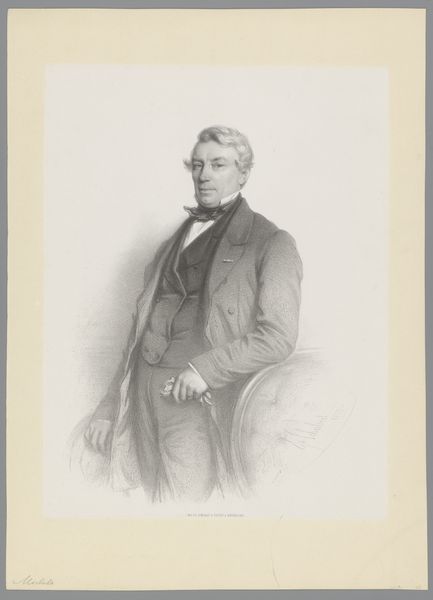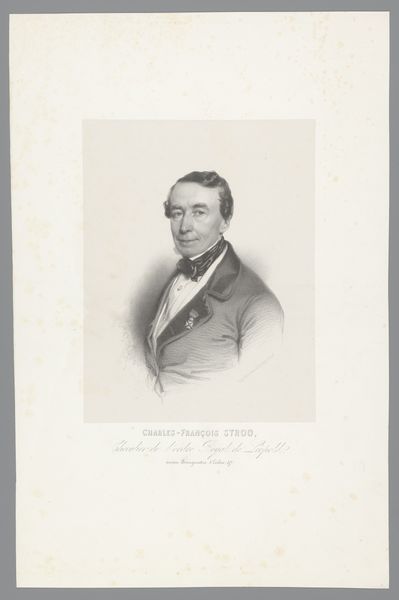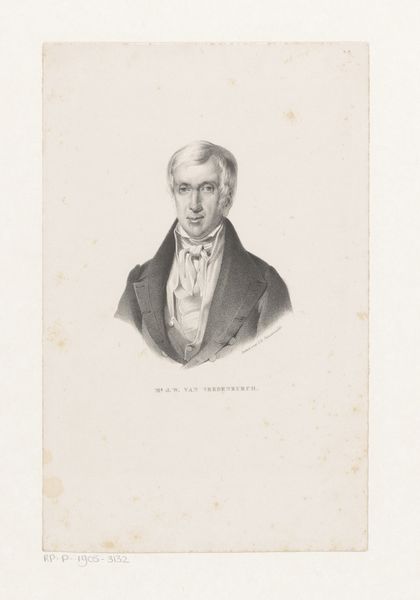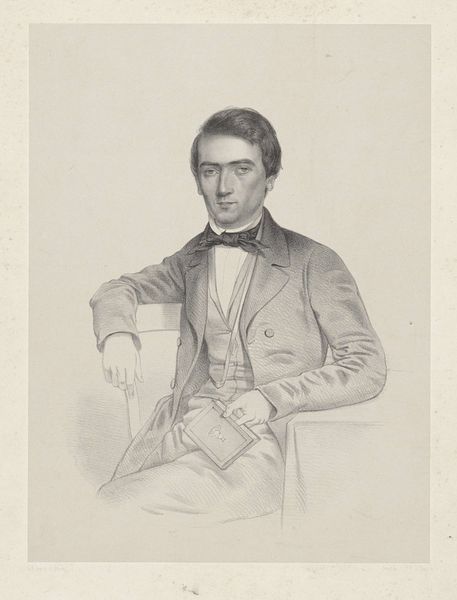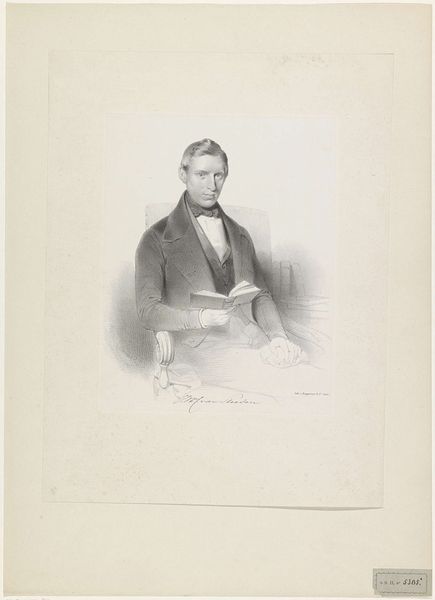
engraving
#
portrait
#
portrait reference
#
academic-art
#
engraving
#
realism
Dimensions: height 516 mm, width 371 mm
Copyright: Rijks Museum: Open Domain
Editor: This is “Portret van Jean-Baptiste Léonard,” made in 1878 by Joseph Schubert. It's an engraving. It has this very formal, almost severe feel to it. What strikes you when you look at it? Curator: Immediately, I’m drawn to the iconography of the rising bourgeois in the late 19th century. The man's steady gaze, the formal attire—they are all visual cues signaling respectability and status. Consider the weight placed on outward appearances then; can you sense it here? Editor: Absolutely. He’s very consciously presenting himself in a particular way. Curator: Precisely. And notice the absence of overt symbols of power, like medals or overtly lavish clothing. Instead, the power resides in the restraint. The tightly knotted bow tie. The severe haircut. It suggests a new form of authority based on self-discipline and diligence, something new to celebrate. Do you pick up any subtle indicators? Editor: I guess, maybe the pocket watch chain? It subtly hints at wealth, but it's not ostentatious. Curator: Good eye! The pocket watch wasn’t simply a time-telling device. Think of its cultural meaning. As the Industrial Revolution matured, watches stood for valuing time. Representing its increasing preciousness and measurability for efficient manufacturing and workdays. Do you sense a visual program portraying “self-made” men in contrast to aristocratic portraiture? Editor: That makes total sense. It’s fascinating how much cultural information is packed into what seems like a simple portrait. I didn’t appreciate all those symbolic layers at first. Curator: Indeed. What appears austere initially reveals itself as a complex statement about emerging social values. I learn new details myself each time I view this.
Comments
No comments
Be the first to comment and join the conversation on the ultimate creative platform.
